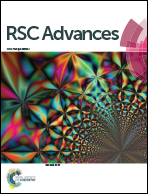Friction mechanism of zinc oxide films prepared by atomic layer deposition
Abstract
Friction and wear can make the normal operation of zinc oxide (ZnO) films in many devices impracticable. In this paper, the friction mechanism of ZnO films was studied. The ZnO films were prepared by atomic layer deposition (ALD) on a Si (111) substrate, and the crystal structure of the films was controlled by adjusting the substrate temperature. The surface morphology, microstructure and composition of the ZnO films were studied by scanning probe microscopy (SPM), transmission electron microscopy (TEM) and Auger electron microscopy (AES), respectively. The friction coefficient of the ZnO films was measured by a ball-on-disk tester. The results show that the ZnO film deposited at 300 °C has a larger crystal size than that deposited at 150 °C. In addition, the 300 °C deposited ZnO film consists of mainly (002)-textured nanocrystal, while the 150 °C deposited ZnO film consists of other orientations of nanocrystal, such as (100) and (101)-textured nanocrystals. The friction coefficient of the ZnO films is ∼0.1, much smaller than 0.6 of the Si (111) substrate. Low friction coefficient is attributed to plastic deformation induced nanocrystal structure to amorphous structure transformation. The 150 °C deposited ZnO film has smaller crystal size than the 300 °C deposited ZnO film, and thus it deforms more easily and the friction coefficient is smaller.


 Please wait while we load your content...
Please wait while we load your content...